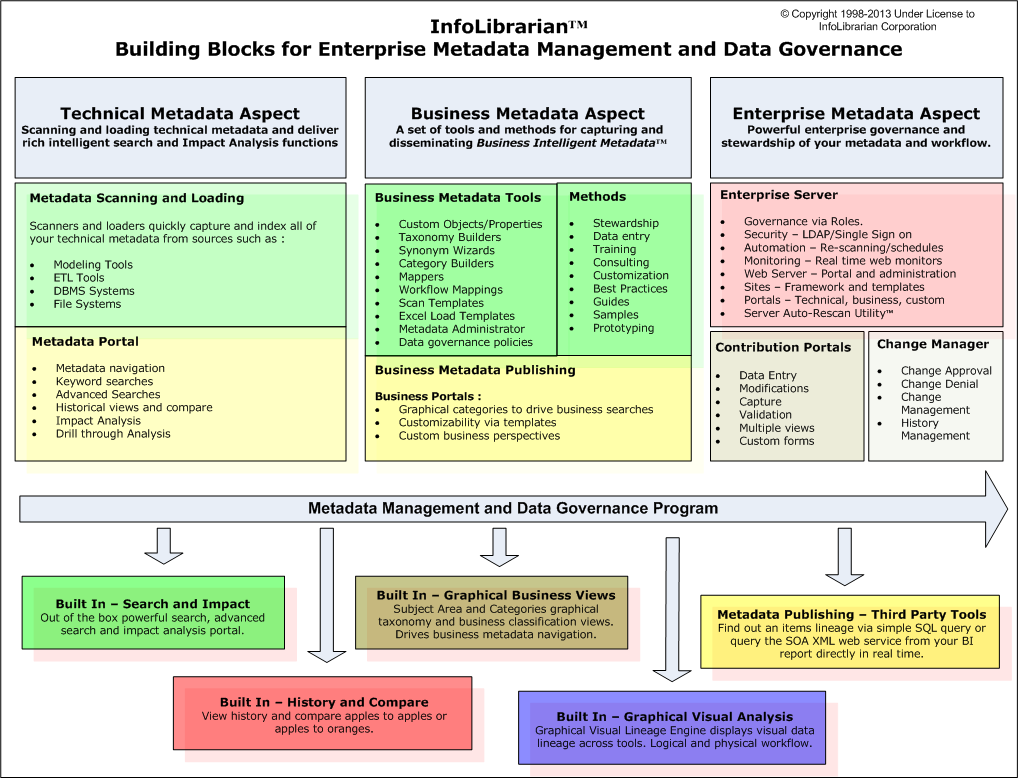The Big Picture Perspectives
We’ve broken down the types of metadata into three main perspectives Technical, Business, and Enterprise as depicted in this diagram.
Aspects for Metadata Management
Technical Metadata Aspect
Here we address capturing technical metadata within a repository such as schemas, configurations, and code using automated processes and adapters. Since this aspect is mostly automated, it provides searching and impact analysis capabilities directly against the technical metadata.
Business Metadata Aspect
Notice that the business metadata aspect is broken out into two parts; tools and methods respectively. When we start to look at capturing business metadata, we’ll be faced with much more challenges to capture specific business metadata. In fact we may find that most business metadata lives in Excel Spreadsheets or people’s heads. This is where the tools and methods needs to be considered. Essentially, what is needed is a set of tools that allow for the creation, management, mapping, stitching, classification, and loading of business metadata from many possible sources. In cases where data entry will be required; collaboration, metadata governance, and stewardship will be critical to a system for capturing business metadata.
Enterprise Metadata Aspect
When we think of the enterprise metadata aspect, we address functionality and requirements as they relate to governance, stewardship, collaboration, security, change management, retention, and publication or sharing of metadata.
Metadata Repository
- A metadata repository has a facility to store your important metadata. Need a place to put it?
- Much less volume than data!
- Does not have to be singular,and can federate for searching.
- Contains mostly business metadata. Direct to technical.
- Technical metadata is descriptive only.
- Does not make sense to reverse engineer everything into a monolithic repository.
- Searchable and can create reports.
- A robust portal. (Web front end).
- Taxonomy driven navigation.
Some Data Entry Required
- No way to do business metadata without some data entry.
- Value returned versus cost of data entry is huge. (Its worth it).
- Most of the important metadata, business metadata lives in peoples heads, or in spreadsheets.
- Someone needs to connect the dots. Subject matter experts, data stewards, librarians.
- Can make part of a process with the right solution.
- Contributors use wiki style data entry screens.
- Workflow integration for approval and metadata stewardship.
- Automated scanning and refresh of technical metadata.
- Model driven architecture. Example, logical model may contain business definitions; therefore can be captured as part of scanning process and automated.
- Requirements driven Business Analyst web form. Use controlled vocabulary (Business Terms) to build the report spec.


